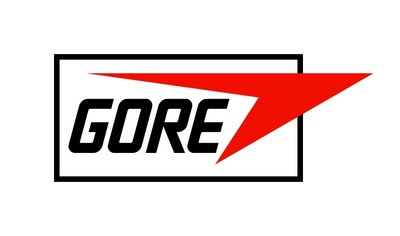Les améliorations apportées aux dispositifs de grand diamètre comprennent l’accessibilité par des gaines plus petites tout en permettant une meilleure visualisation grâce à l’ajout de marqueurs radio-opaques
25 ans d’innovation continue
PUTZBRUNN, Allemagne, 22 septembre 2021 /PRNewswire/ — Dans le cadre de ses efforts pour améliorer continuellement les solutions médicales pour les patients souffrant de maladies vasculaires complexes, W. L. Gore & Associates, Inc. (Gore) a annoncé le lancement dans la région EMEA de l’endoprothèse GORE® VIABAHN® à profil plus bas et à grand diamètre avec surface bioactive PROPATEN. Les améliorations apportées à ce dispositif s’appuient sur une endoprothèse leader sur le marché, qui est devenue un outil important pour le traitement des maladies vasculaires complexes. La conception innovante du dispositif VIABAHN® réduit le profil de pose des grandes endoprothèses de 9 à 13 mm de diamètre jusqu’à 3 CH, ce qui permet de les poser dans des gaines plus petites. Des gaines d’introduction plus petites ont permis de réduire le risque de complications liées à l’accès vasculaire chez certaines populations de patients.1 En outre, de nouveaux marqueurs radio-opaques, désormais présents sur les configurations de dispositifs de plus grand diamètre, améliorent la visualisation sous fluoroscopie, facilitant le positionnement et la pose du dispositif, ainsi qu’un placement précis et prévisible. « Outre les marqueurs radio-opaques qui facilitent le positionnement et le déploiement, le nouveau profil plus bas permet d’utiliser une gaine plus petite, ce qui réduit potentiellement le risque de dommages au niveau du site d’accès », a déclaré Manuel Alonso, docteur en médecine, chirurgien vasculaire, Oviedo, Espagne. « Associée à la traçabilité et à la flexibilité, cette nouvelle offre de profil plus bas deviendra très utile dans ma pratique pour traiter les patients complexes dans tous les états pathologiques. »

« L’histoire de l’endoprothèse GORE® VIABAHN® est l’histoire d’une collaboration entre médecins pour quatre indications centrées sur le patient et d’une performance prouvée à maintes reprises », a déclaré Benjamin Beckstead, responsable de la catégorie vasculaire chez Gore.
Depuis son lancement dans l’UE en 1996, le dispositif a évolué grâce à de nombreuses améliorations et a pris en charge des centaines de milliers de patients dans le monde entier. Actuellement, le dispositif VIABAHN® est utilisé dans de nombreuses indications cliniques telles que les lésions de l’artère fémorale superficielle (AFS), les lésions iliaques, la resténose intra-stent des lésions de l’AFS et les lésions du circuit d’accès artério-veineux (AV).*
Pour plus d’informations, rendez-vous sur le site https://www.goremedical.
* Pour obtenir des indications complètes et d’autres informations importantes sur la sécurité des produits commerciaux Gore mentionnés dans le présent document, reportez-vous aux instructions d’utilisation.
1. Applegate RJ, Sacrinty MT, Kutcher MA, et al. Trends in vascular complications after diagnostic cardiac catheterization and percutaneous coronary intervention via the femoral artery, 1998 to 2007. JACC : Cardiovascular Interventions 2008;1(3):317-

Gore conçoit des dispositifs médicaux qui traitent toute une série de maladies cardiovasculaires et d’autres problèmes de santé. Avec plus de 50 millions de dispositifs médicaux implantés pendant plus de 45 ans, Gore s’appuie sur sa réputation pour améliorer le pronostic des patients à travers la recherche, la formation et la démarche qualité. L’efficacité des produits, la facilité d’utilisation et la qualité du service permettent aux médecins, aux hôpitaux et aux assureurs de réaliser des économies significatives. Gore est au service des cliniciens et grâce à cette collaboration, nous améliorons des vies.
À propos de Gore
W. L. Gore & Associates est une entreprise internationale spécialisée dans la science des matériaux et dont l’objectif est l’amélioration du secteur et des conditions de vie. Depuis 1958, Gore répond à des défis techniques complexes dans des environnements exigeants – de l’espace aux plus hauts sommets du monde en passant par le fonctionnement interne du corps humain. Avec plus de 11 000 associés et une forte culture axée sur le travail en équipe, Gore génère un chiffre d’affaires annuel de $3,8 milliards de dollars.
Les produits énumérés peuvent ne pas être disponibles sur tous les marchés.
GORE, together, improving life, PROPATEN et HELEX, et les modèles sont des marques déposées de W. L. Gore & Associates.
Photo – https://mma.prnewswire.com/
Logo – https://mma.prnewswire.com/
